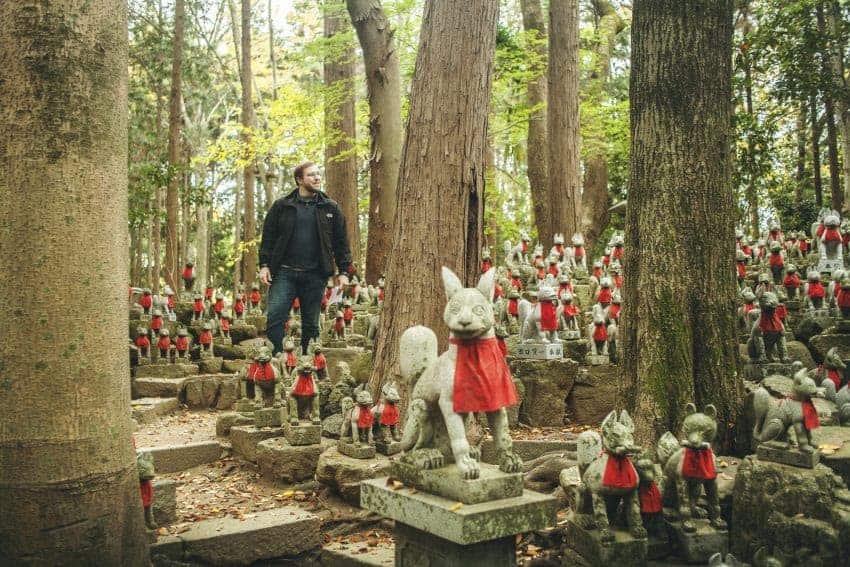
Private Tour Guide a Rare Bargain in Japan
By Christine Negroni and Andrea Lee Negroni
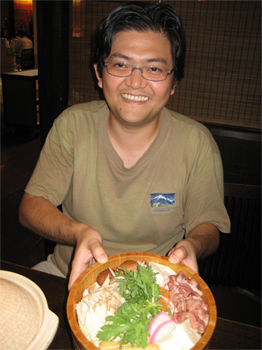
Japan is not known for bargains, but on a recent trip, we found one of the best values either of us has encountered in four decades of international travel; private tour guides for the price of a train ticket and a meal.
On our first visit to Japan in September 2010, we had just four days in Tokyo. We wanted to see as much of the city as possible so we signed up for Goodwill Guides, Japanese volunteers who want to practice speaking foreign languages.
“It offers mutual benefit,” explained one of our guides, Eisuke Takahisa, 35, a chemical engineer who was trying to “keep the rust” off the English he learned in Canada as a teenager.
According to the Japan National Tourist Organization website, there are 81 Systemized Goodwill Guide Groups in Japan, five in Tokyo. Takeo Aizawa, a 71 year old English teacher became a guide with the Shinagwa SGGG group in 2004.
“There was no such volunteer-guide group in Tokyo,” he said. Mr. Aizawa is now one of 51 guides in the group which has given tours to 325 people.
We contacted three groups the week before leaving New York and within 48 hours had arranged for guides from two of them. The guides propose sightseeing plans or go to places suggested by visitors. Their service is flexible.
Reconnect with Relatives
When Larry Lincoln, 54, a financial advisor from Delaware visited Tokyo, he was returning to the country of his birth, which he left as a child. He asked Mr. Aizawa to help him reconnect with relatives who did not speak English. “From a hello and help me out, we became pretty good friends.” Mr. Lincoln said, adding Mr. Aizawa was a positive addition to his homecoming. ”Going back to my birthplace was a very, very special moment, hard to put into words.”
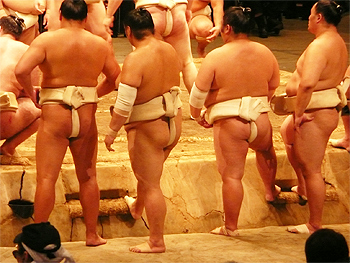
Whatever visitors need, their only financial obligation is to pay for the guide’s transportation and meals, but from a TGIF night in Tokyo to a Sunday afternoon of shopping, our guides showed us things we could not have found or understood on our own.
The night after we arrived in Japan we had our first outing with Natsuko Yasuda, 27, of the Tokyo International Student Guide group. By day she works for the Bank of Tokyo-Mitsubishi. For a working-girls’ evening out, she arranged to meet us at the Ebisu train station and steered us to a trendy restaurant through throngs of young people exiting high rise office towers.
Once seated, Ms. Yasuda nixed our eager-tourist idea of ordering sake and instead ordered shochu, a Japanese distilled spirit. Thankfully, she was not shy about taking charge. The dinner menu was exclusively in Japanese and no photos or plastic food models were available to help us.
Ms. Yasuda didn’t order everything at once, as we would have, but asked for one course at a time, which we shared over conversation about our families, careers, travel, and men. We sisters could hardly believe it — not 24-hours in country and we were already having a girlfriend gabfest.
Sumo Wrestling
Saturday morning Mr. Takahisa met us in the lobby of our hotel. He came with exceptional news; despite being too early in the season to see Sumo wrestling matches, he had found a free pre-season exhibition going on that very day. Considering that tickets range from $25 to $170 and Sumo matches are frequently sold out, this was great news. Mr. Takahisa had proved his value before we ever left the hotel lobby.
We were the only westerners at the Kokugikan Sumo Arena and we gaped like the gaijin we were as the huge, barely-dressed, top-knot sporting athletes pushed each other around the ring called a dohyo. Sumo is a difficult sport for middle-aged American women to appreciate without some knowledge of the culture, but Mr. Takahisa’s quiet explanation of the rules, the ring and the relationship of the sport to history and religion converted the spectacle into something graceful and dignified right before our eyes.

We had lunch nearby at a place featuring a full-size dohyo,in the middle of the restaurant. Families led their children into the dohyo to pose for photos while Mr. Takahisa did the cooking at our table – tossing bits of meat, tofu and fish into a boiling pot of soup. This is the one-pot creation called chanko, Mr. Takahisa explained, the Sumo wrestlers’ staple.
Buckwheat noodles served cold, were also on the menu, but when we tried to order them, the waitress said they’d run out. Still riding high from his achievement introducing us to Sumo, Mr. Takahisa said something to the waitress and plate of the delicious noodles soon appeared.
A fun Job
“Almost 90 percent of Goodwill tours are conducted in English,” Mr. Aizawa explained, “even non-native English speakers are usually guided in English.” During our walk through Yokoamicho Koen Park, he explained that his job at a fragrance factory was very different from his weekends as a guide. “Lab work isn’t always exciting”, he said. Guiding tourists “gives me the chance to meet the kind of people who otherwise will never be on my schedule-book.”
At the Tokyo Memorial Temple, Mr. Takahisa explained that the shrine and garden honored the 100,000 victims of the 1923 Kanto Earthquake. Inside the shrine, an exhibition of photographs from the great Tokyo air raid of 1945 needed his translation, as the captions were only in Japanese.
Our English-speaking guide was especially helpful on Sunday at the Ameyoko Market, where densely packed street stalls sell everything from candy to CDs, shoes and fish eggs. From the jostling it appeared a large number of Tokyo’s 12 million residents were shopping alongside us.
Takahiro Nakajima, a private language instructor in his mid-fifties and also from the Tokyo International Student Guide group, explained products, read package labels and translated sales pitches shouted out by eager merchants. Packages of dehydrated squid and banana-flavored KitKat bars made us hungry and Mr. Nakajima found a second floor, air-conditioned noodle shop above the steamy chaos where we ate the best tempura we’d ever had.
Eating with our guides helped us make sense of the menus and made us more adventurous in our food choices. It was well worth paying for an additional person.
Before we parted, we posed for pictures and Mr. Nakajima asked us to draw and sign a map of our home country in his notebook. Autographs and photographs are tourist souvenirs of course, but Mr. Aizawa says they document travel of the mind that the guides are taking as well.
“In a sense it is a sort of foreign travel in my native country,” Mr. Aizawa said. “Each guiding is a new discovery and new experience for us too, even if it is a place we have visited many times.”
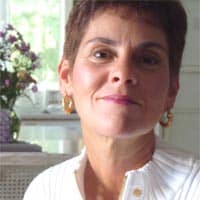
Christine Negroni is a travel writer and aviation geek. Her stories appear in The New York Times, the International Herald Tribune and Executive Travel magazine. Her blog is about how we get to the places we go. For her highly opinionated views on aviation read FLYING LESSONS. It is all dialogue so join in.
- The Wild Mississippi: 2340 Miles Across Ten States - April 8, 2024
- Exploring the Floating Villages of Tonle’ Sap Lake - April 3, 2024
- Woman Traveling Solo on Turkish Buses - March 27, 2024


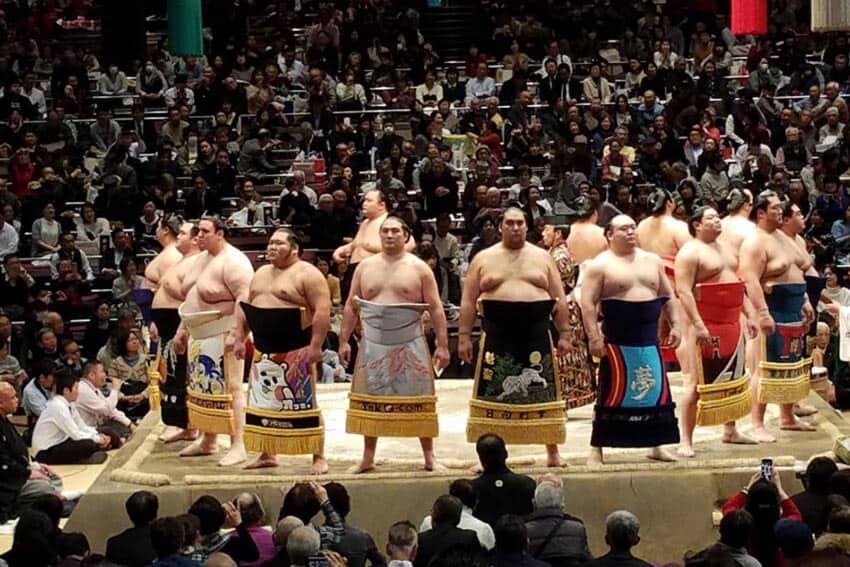
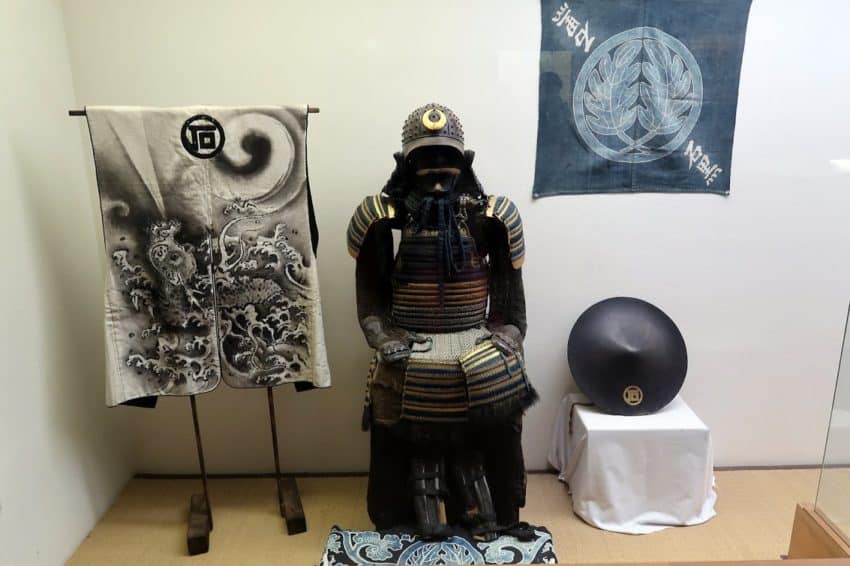

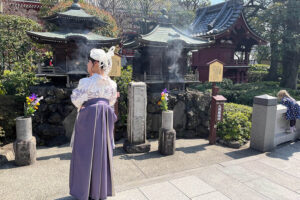
Good day. We will be arriving in Tokyo October 12th and would like to know if it is possible to arrange with a good will guide. English or Spanish
good morning,
we are arriving Kyoto on 18-21/3 and to Tokyo on 24-30/3.
we would love to meet a goodwill guide.
can you send me en email to contact your office?
Hellow
I will be in Tokyo on 2-3 aprill snd i would like to have s good will guide
To whom i have to send mail
Rachel